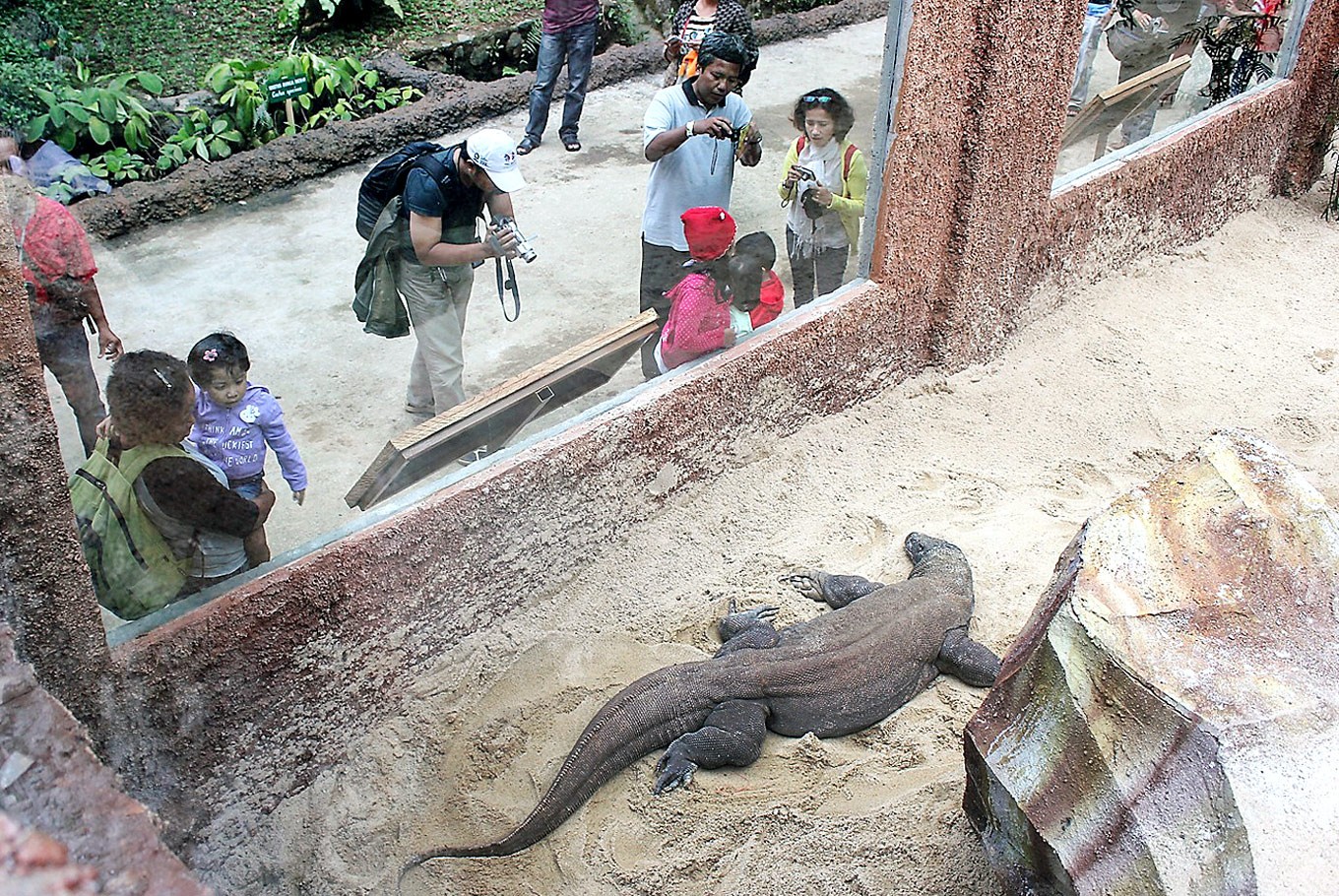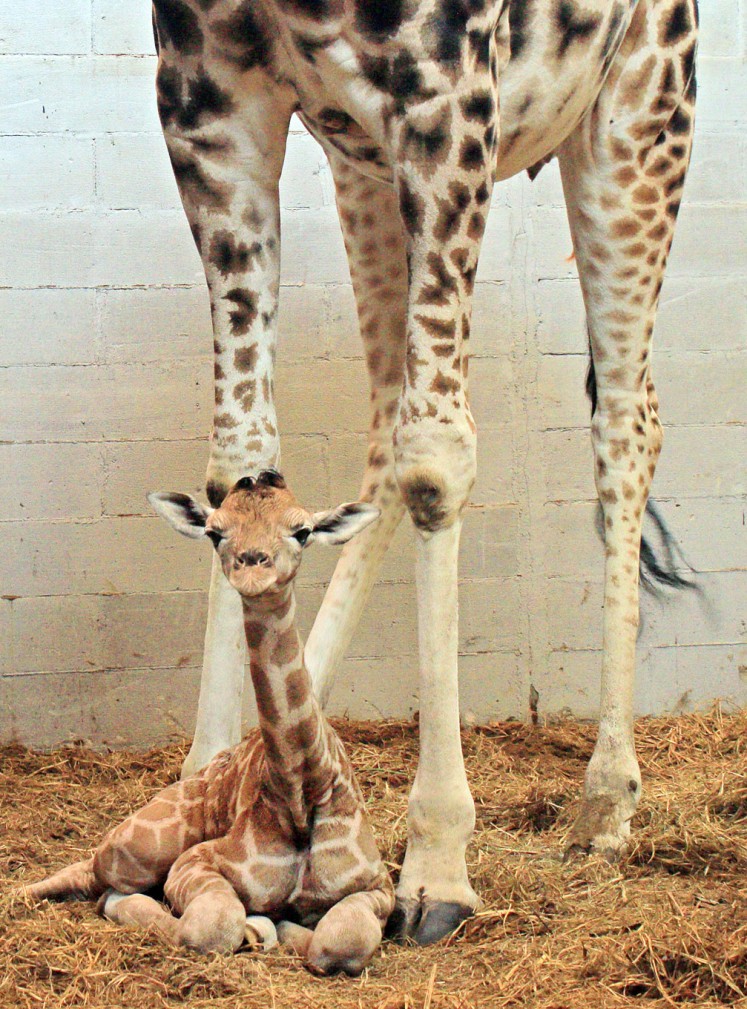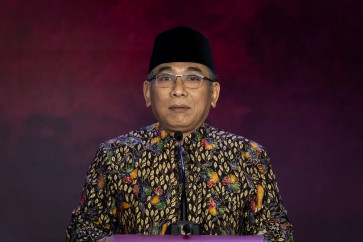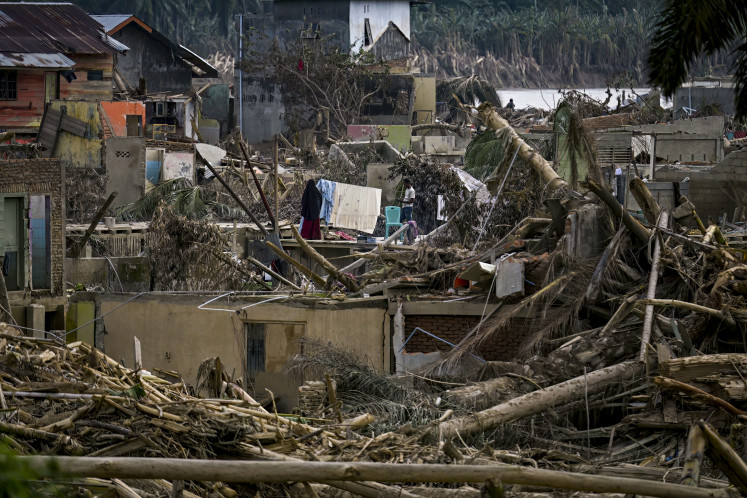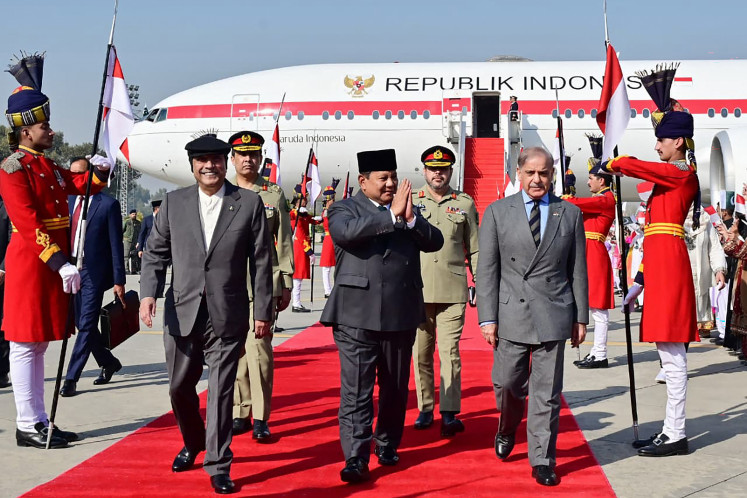Popular Reads
Top Results
Can't find what you're looking for?
View all search resultsPopular Reads
Top Results
Can't find what you're looking for?
View all search resultsHuman and animal conflict of the nation's menagerie
All the country’s a menagerie; and all its animals are at the mercy of its human stewards. Some remain in the wild. Some are taken care of for conservation. Some are merely pawns, expendable if need be.
Change text size
Gift Premium Articles
to Anyone
G
iving birth standing up, a mother giraffe collapsed with its legs stretched out straight in opposite directions. Somehow, with great difficulty, it managed to stand up again only to collapse again in the same fashion.
About 40 veterinarians, biologists and staff members could only watch in helpless horror as the poor giraffe, in unspeakable agony, struggled to hold on to life and died a few hours later.
“We were all at a loss as to what to do. Fortunately, the baby survived,” recalled Indonesia Safari Park director Jansen Manangsang of his heartbreaking, harrowing hours of waiting. He blamed himself for being unprepared to face such an unexpectedly difficult delivery.
As the director of the country’s top zoo that also doubles as a conservation institution, Jansen is concerned not only for the animals inside the park, but also for the endemic species found elsewhere across the archipelago.
In the Peleonan Forest on Siberut, the largest of the Mentawai islands, Jansen pointed out, there were four endemic primate species: the Mentawai gibbon, also known as bilou; the Siberut macaque; Mentawai langur, also known as joja; and pig-tailed langur, also known as simakobu.
“They can’t be found anywhere else in the world and no zoo has them,” he said.
“About a year ago I sent a team to record and study them. We found, to our dismay, that the island’s indigenous tribal hunter gatherers hunt them for food. Yet, we can’t blame them. There is no cattle. The nearest village to get cattle meat lies about seven hours away by speedboat. So, they eat monkey to meet their nutritional needs.”
Latest addition: A baby giraffe poses at Indonesia Safari Park in Bogor, West Java. The giraffe was born in February. (Indonesia Safari Park/File)The 75-year-old conservationist who, as the chairman of the Indonesia Dolphins Forum, has also led a three-week rescue operation to return a marine dolphin that had strayed into a river in Medan, North Sumatra, back to sea.
“The mammal swam miles up the river towards Pematang Siantar. The rescue operation had to be carried out at night because during the day, the areas along the river are bustling with trading activities,” he recalled.
Jansen and his team have also successfully helped address human-elephant conflicts arising from the conversion of forests to settlements, farms and oil palm estates that blocked the elephants’ natural migratory routes.
To stop the routine damage to cash crops by elephants in Sumatra, he had the crop raiders captured using morphiometric drugs and relocated to the elephant training center he had established in Way Kambas before the Indonesia Safari Park came into being to be domesticated and trained.
Read also: Chicco Jerikho on mission to save Sumatran elephant
He was also the man behind the successful staging of elephants during the Indonesian Independence celebration parade around the National Monument and the State Palace in 1990.
“All the elephants behaved as expected. None of them urinated or defecated during the procession. Otherwise, some heads would roll.”
At present, his top priority is devising an effective breeding strategy for critically endangered two-horned, hairy Sumatran rhinos at a sanctuary he set up in Way Kambas, Lampung.
“Only six have thus far been born in the sanctuary in the past 72 years: two at the Indonesia Safari Park, two at Way Kambas, one at the Bali Safari and Marine Park and another one at the Prigen Safari Park,” he said.
He added that “artificial insemination is extremely difficult due to their ancient reproductive organs that require vacuum-tight interconnection during penetration to speed up semen expulsion”.
A lack of understanding about their reproductive biology and the absense of reliable methods for monitoring their reproductive status were some of the reasons cited in Muhammad Agil’s 2007 post-graduate dissertation on the reproductive biology of Sumatran rhinos.
Jansen, however, attributes their dwindling population in the first instance to a “lack of a one-stop well-integrated cross-cutting spatial plan that prevents economic and infrastructure development projects from infringing on rhino trails. Thus, forest removal and the ensuing roads/settlements built across their habitats destroyed their protective natural barriers, making them vulnerable to poaching and extinction”.
Now that the damage has already been done, zoos that combine money-guzzling conservation programs and money-generating recreation attractions like his safari parks have become instrumental in rescuing wildlife and species survival.
Even the World Wide Fund for Nature had abandoned its anti-zoo stance, he said, recalling the case of a female tiger found in the wild with a broken leg that had to be amputated and cared for. “Now she has given birth to three cubs. With only three legs, would she survive if released into the wild?”
Speaking of survival, Jansen recounted how the 1997 Asian economic crisis forced him to rely on foreign meat donations for two years and how the Bali Safari Park’s revenues dropped by 70 percent due to Mount Agung’s 2017 eruption. “Thank God, I didn’t have to resort to layoffs nor salary cuts during those hard times,” he added.
In 2014, as president of the Southeast Asia Zoo Association, Jansen was asked to investigate a case at Surabaya Zoo where “a lion found hanging in its cage was reported to have committed suicide”. “No one could be held responsible because the zoo was not a legal entity. It had no owner, the land belonged to the city, the wildlife belonged to the Environment and Forestry Ministry and those running the zoo were unwilling to register the zoo as a legal entity,” he said.
Listening to the issues he encountered and the successes he achieved during his 100-minute presentation before a team from the Environment and Forestry Ministry felt like a safari to the nooks and crannies of his mind.
Jumping from one topic to another, back and forth in time, the former circus acrobat painted an arresting mosaic echoing Mahatma Gandhi’s admonition that “the greatness of a nation and its moral progress can be judged by the way its animals are treated”.

